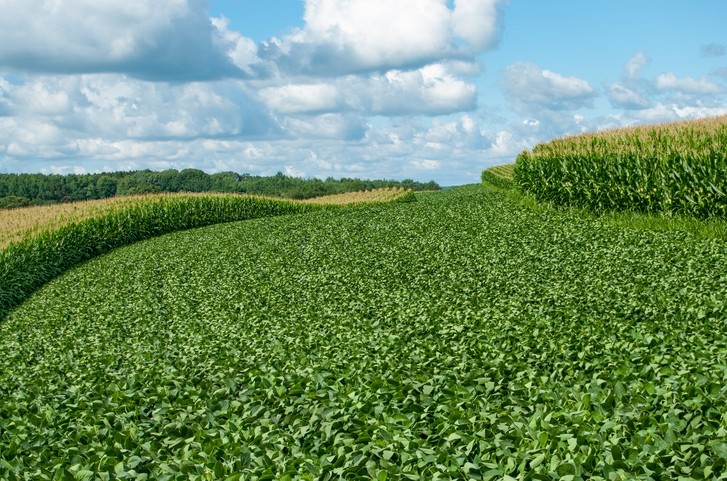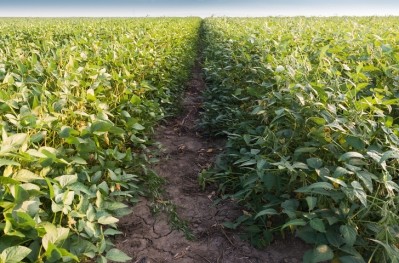US feed crops see uptick in acres planted, price uncertainty from trade

The US Department of Agriculture released details about acres planted in several feed crops on Friday [June 29] to update the initial planting indications presented in March.
The new report brought some surprises, said Todd Hubbs and Scott Irwin, both with the department of agricultural and consumer economics at the University of Illinois, during a FarmDoc webinar on the report.
Overall, the acres planted in both corn and soybeans were down from what was seen in 2017, the USDA reported. However, acres for both feed crops were larger than what had been initially forecast in March.
“The big news today was we found a bunch of acreage, about 3.2m acres,” said Hubbs during the webinar. “We’re putting in about 2m acres of prevent plant, but we’ve had such good planting this year that that might actually be lower.”
Additionally, the amount of land planted with wheat rose 4% from what had been planted in 2017, the department said. It also marks an increase from what had been predicted earlier this year.
Acre surprise details
About 89.1m acres were planted in corn in 2018, the amount is a 1% drop from last year, the USDA said. However, the amount is an increase from the 88m acres planted with corn predicted in March.
The majority of the increase in planted area for corn and soybeans came from the Plains and Northern Plains, while some of the larger feed crop producing states in the Midwest like Iowa, Illinois and Indiana were more consistent with earlier expectations, said Hubbs. “We saw a lot of acres come in from the March report – we found a lot of acreage.”
“We saw a little out in the East as well, but overall we saw a little more spring wheat planted, we saw more cotton – more corn, slightly more soybeans,” he said. The change in acres planted also may have implications for crop prices, he added.
“Corn came in at 89.1m [acres] that was well above the guess of 88.562 that the trade was expecting and it was 1.1m acres above the March planting intention,” he said. “When we looked state-to-state if you went back and looked at March perspective planting numbers, Minnesota was up 300,000 acres, so was North Dakota – Nebraska was up 400,000 acres, Kansas was up 300,000 acres.”
The expected yield for corn is forecast to be 176 bushels an acre, Hubbs said. “There’s still a lot of weather to go, a lot of things could happen through July, but the corn crop is off to a good start.”
Based on acreage, there is potential to have a much larger crop coming in than initially anticipated, he said.
In June, the USDA also reduced the amount of corn consumed through feed and residual uses, he said, adding, “We feel like at some point these livestock numbers have to kick in – there are a lot of DDGS out there and it does replace in the ration, more corn than meal, but it seems like a conundrum.”
If there was no uncertainty on trade issues, the expectation is that corn exports could increase next year, he said. “Corn is a bargain in the world market as a cheap feed grain.”
“Average price next year is $3.70, which is in the bottom of the USDA current range,” he said. “A lot of that has to do with increased acreage and high yield potential – we’re seeing a large supply, but having said that, even if we get a higher yield we could see more use … corn is cheap at this price and I think we’ll see it move strongly without any trade issues – having said that, that’s a fantasy world.”
Similarly, soybean planted acreage was 89.6m acres, an increase from the 89m acres predicted in March, the department said. However, the amount is still smaller by 1% than what was planted in 2017.
“We saw soybean acres come in at [about] 89.5m acres that was below the trade guess – we only added about 0.5m acres of soybeans from March planting intention,” said Hubbs. “This is a nice surprise.”
The change would be a bullish indication for soybeans, if there were not lingering uncertainties from trade, he said.
Without trade issues, the average price expectation for soybeans in 2018/19 would be about $9.50, he said. However, if trade issues continue, the expectation is that prices for the protein ingredient could continue to drop to the $8.80 range.
Wheat acres were expected to be about 47.3m in March, and is now estimated to be 47.8m acres – an increase of 4% from 2017, the department said. The amount remains the second lowest planted acreage since 1919.










